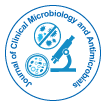

Commentary - (2025)Volume 9, Issue 1
Polymicrobial infections, defined as infections involving more than one microbial species, present significant diagnostic and therapeutic challenges in clinical settings. These infections are especially prevalent in complex wound infections, diabetic foot ulcers, intra-abdominal sepsis, ventilator-associated pneumonia, and infections associated with biofilms and prosthetic devices. Unlike monomicrobial infections, where targeted therapy is often straightforward following pathogen identification and susceptibility testing, polymicrobial infections complicate both the identification of causative organisms and the formulation of effective treatment regimens. The synergistic and antagonistic interactions between microorganisms within a polymicrobial community can influence virulence, resistance, and treatment response, adding layers of complexity to both diagnosis and management.
Diagnosing polymicrobial infections is inherently challenging due to limitations in conventional microbiological techniques. Standard culture methods are often biased toward rapidly growing or dominant organisms, potentially overlooking slower-growing or less abundant but clinically relevant pathogens. Furthermore, anaerobic organisms and fastidious bacteria are difficult to isolate using routine procedures. These limitations can result in incomplete microbial identification, leading to suboptimal treatment strategies. Moreover, traditional culture may not differentiate colonization from infection, particularly in polymicrobial biofilm-associated conditions, where multiple organisms persist in a sessile, protected community. Recent advances in molecular diagnostics, including multiplex PCR, metagenomic next-generation sequencing (mNGS), and MALDI-TOF mass spectrometry, offer the ability to detect a broader range of pathogens more accurately and rapidly. However, these technologies remain costly, require specialized expertise, and often generate data that are difficult to interpret in terms of clinical relevance.
From a therapeutic standpoint, polymicrobial infections require carefully balanced antimicrobial regimens that account for the susceptibility profiles of multiple organisms. Inappropriate empirical therapy is associated with higher mortality, especially in critically ill patients with sepsis or intra-abdominal infections. Broad-spectrum antibiotic use, although necessary in the early phase, increases the risk of selecting for resistant organisms and disrupting the normal microbiota. In many cases, the organisms involved include a combination of Gram-positive cocci, Gram-negative bacilli, and anaerobes, necessitating combination therapy. Determining the optimal treatment duration and the need for de-escalation based on microbiological findings can be particularly difficult in polymicrobial scenarios, where certain pathogens may not be clinically significant, yet are still detected.
The role of antimicrobial resistance in polymicrobial infections cannot be overstated. Resistance genes can be transferred horizontally between different bacterial species coexisting in the same niche, particularly in biofilm environments. These horizontal gene transfers complicate treatment by introducing resistance mechanisms that may not be present in monoculture models. Additionally, the protective effect of biofilms can further shield pathogens from both the host immune response and antimicrobial agents, necessitating higher doses or prolonged courses of therapy, which in turn carry increased risks of toxicity and secondary infections such as Clostridioides difficile. Emerging resistance among anaerobic organisms and multidrug-resistant Gram-negative bacilli in polymicrobial infections, especially in surgical and trauma-related cases, is a rising concern globally.
Effective management of polymicrobial infections goes beyond antibiotics alone and often requires a multidisciplinary approach. Surgical intervention for source control is often a critical component of successful treatment, particularly in intra-abdominal abscesses, diabetic foot infections, or infected prosthetic materials. Close collaboration among infectious disease specialists, microbiologists, surgeons, and pharmacists is essential for optimizing patient outcomes. Early consultation with infectious disease experts has been shown to improve antimicrobial stewardship and reduce inappropriate antibiotic use in polymicrobial contexts. Tailoring therapy based on culture results, clinical response, and radiologic findings is crucial for achieving both microbiological eradication and clinical resolution.
In conclusion, the diagnosis and management of polymicrobial infections remain a major challenge in modern medicine, particularly in an era marked by increasing antimicrobial resistance and complex comorbidities. The limitations of conventional diagnostics, the need for broad and often toxic antimicrobial coverage, and the intricacies of microbial interactions all contribute to the difficulty of treating these infections effectively. While advances in molecular techniques and personalized medicine offer hope, their integration into routine clinical practice will require greater accessibility, standardization, and interpretive clarity. Moreover, antimicrobial stewardship, multidisciplinary collaboration, and aggressive source control are all vital components of a comprehensive management strategy. Addressing these challenges requires continuous research, investment in diagnostic technologies, and commitment to best clinical practices to reduce morbidity, mortality, and healthcare costs associated with polymicrobial infections.
Citation: Tseng WL (2025). Challenges in the Diagnosis and Management of Polymicrobial Infections. J Clin Microbiol Antimicrob.09:219.
Received: 03-Mar-2025, Manuscript No. JCMA-25-37630; Editor assigned: 04-Mar-2025, Pre QC No. JCMA-25-37630 (PQ); Reviewed: 18-Mar-2025, QC No. JCMA-25-37630; Revised: 25-Mar-2025, Manuscript No. JCMA-25-37630 (R); Published: 01-Apr-2025 , DOI: 10.35248/ JCMA.25.09.219
Copyright: © 2025 Tseng WL. This is an open-access article distributed under the terms of the Creative Commons Attribution License, which permits unrestricted use, distribution, and reproduction in any medium, provided the original author and source are credited.